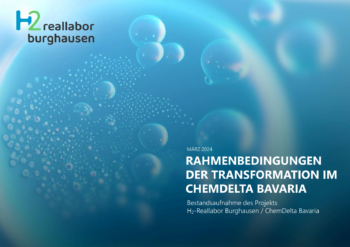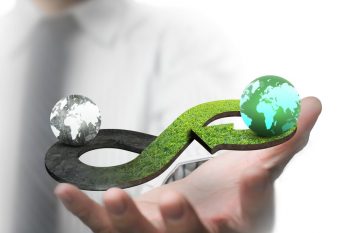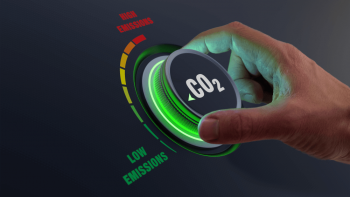The Use of Grass Fiber in Paper Industry – Calculating the Carbon Footprint of an Alternative to Virgin Fibers
Meeting the climate goals of the German government and the international community requires defossilization of all sectors of the economy. As the source of approximately 22 % of German greenhouse gas emissions in 2018, the industrial sector plays a significant role [1]. When these emissions were examined at the level of individual industrial branches in 2016, the paper industry was revealed to be responsible for the third-largest share [2].
Creapaper GmbH has developed a method for processing grass fiber pellets, which can be used to replace a portion of the conventional pulp in the production of paper and potentially contribute to the decarbonization of the paper industry. Creapaper has engaged the FfE to analyze the impacts on energy use and greenhouse gas emissions of the use of grass fiber in the papermaking process.
Using energy consumption data provided by Creapaper, the FfE will calculate the emissions balance for each step in the production process of Creapaper’s grass fiber pellets. This will allow for the comparison of the energetic and CO2 footprints of grass fiber pellets and conventional pulp production. The results of previous work examining the production of conventional pulp via the sulfate process (or kraft pulping) can be seen in Figure 1.

This project focuses on emissions directly related to the production process and allocated to Scopes 1 or 2 of the GHG Protocol. Scope 1 emissions are directly caused by the production process (e.g., via the combustion of natural gas), while Scope 2 emissions are indirect emissions that occur elsewhere during the generation of the energy used in the production process. Emissions arising from other sources within the value chain, such as transportation or disposal of the final product, are not included in the present project.
The pellets produced by Creapaper are used to produce the paper to replace a portion of the conventional pulp. In addition to calculating the emissions balance of pellet production, the FfE will also quantify the effects of incorporating grass fiber into paper production. Visualization of the process step results in the style of Figure 1, and visual comparisons to conventional processes will support an intuitive understanding of the project results.
In a continuation of the research begun in Dynamis Industriesektor (results currently only available in German), the results of this project will also allow the use of grass fiber pellets to be added to the catalog of measures for CO2‑abatement in the paper industry if the results indicate emissions savings. Such catalogs are a key tool for developing decarbonization strategies, quickly becoming necessary in each industrial sector to reach the climate goals of the German government.
Further information:
Sources:
[1] Umweltbundesamt: Emissionen. Published 30.07.2020, accessed 13.10.2020
[2] Fattler, Steffen et al.: Dynamis Hauptbericht – Dynamische und intersektorale Maßnahmenbewertung zur kosteneffizienten Dekarbonisierung des Energiesystems. München: Forschungsstelle für Energiewirtschaft e.V., 2019


